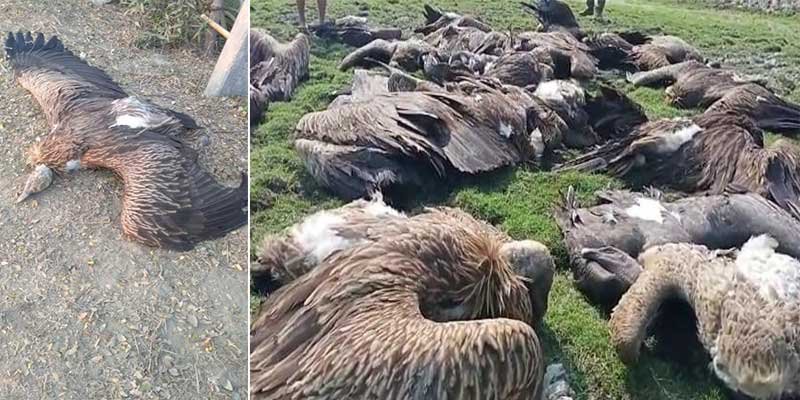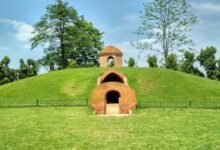Assam: Aaranyak initiates student outreach on vultures conservation in Sivasagar
Thirty-nine vultures died at Panidihing in Sivasagar district in March 2021 as a result of unwarranted human action.

GUWAHATI- Aaranyak, a biodiversity conservation organisations, organised an awareness workshop for the students at Hafaluting High School in Sivasagar district of Assam concerning the conservation of vultures whose numbers have been declining rapidly of late for various reasons.
The awareness event was attended by more than 100 students and teachers of the school, who had the opportunity to engage in the deliberation on the topic which is of great importance for our natural environment.
Aaranyak provided participants with an insight into the importance and various conservation aspects of vultures through the participation of local environmental enthusiast Bijit Dutta and Aaranyak’s Eastern Assam Zone Coordinator, Hiren Dutta.
Assam: Aaranyak observed WWD to highlight Doloni Beel’s importance to food security and livelihood
“There was a time when Sivasagar district was a thriving ground for vultures. But the current condition of the bird in the district is not pleasant. Looking at the number of vultures that have been lost in the district in the last few years, it is really scary situation”, says Hiren Dutta.
“Thirty-nine vultures died at Panidihing in Sivasagar district in March 2021 as a result of unwarranted human action. Remaining 30 vultures were rescued by the forest department and arranged for the treatment. Again, on April 2021, another flock of vultures fell victim to man-made causes. Nineteen more vultures died in the open fields of Lepai village in Sivasagar district after eating carcass of pets that had been poisoned”, Dutta added underscoring the gravity of the situation.

There are many factors which contribute to vulture deaths in Assam, such as habitat loss, poisoning by drugs such as Furadan, which is used to kill stray dogs that hunt village livestock and disease. These issues impact their population and the overall ecosystem.
Another prime reason for the decline of vultures is the lack of suitable nesting trees. Vultures choose only tall, mature and strong trees to make their nests. In the past, there used to be plenty of such trees in villages and towns of Sivasagar district. But today, such trees are rarely seen. The number of these trees is significantly decreasing because of the growing human population. As a result, vulture breeding has been adversely affected. This has led to a severe decline in the vulture population.
Assam Budget Session: Examination Bill tabled in Assembly
“In the Sivasagar district, the habitat of vultures is now mainly found in the vicinity of Dimou area though the entire district used to be home to vultures.”, Hiren Dutta further says.
The Eastern Assam Zone of Aaranyak has taken a decision to install illustrative awareness posters in the areas of district where vultures often encounter death because of various factors.
Raising awareness among students about the importance of vultures in maintaining ecological balance and the threats they face can lead to informed conservation efforts. Education can inspire the younger generation to advocate for policies, support conservation projects and promote responsible waste disposal to safeguard vulture habitats.









